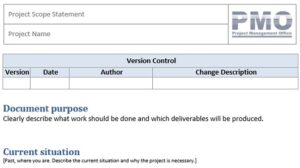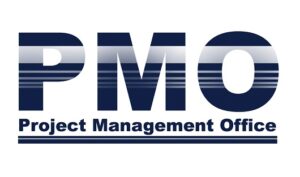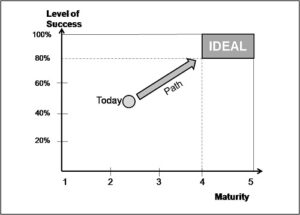In a world of accelerating change and uncertainty, projects no longer fail because of poor planning — they fail because teams don’t anticipate, adapt, and respond effectively to risks.
Recognizing this, the PMBOK® Guide – Eighth Edition introduces a modernized, value-driven view of risk management through the Risk Performance Domain.
This domain reframes risk as an integral component of value creation, not just an obstacle to avoid. It focuses on building resilient systems, adaptive decision-making, and organizational learning that turn uncertainty into opportunity.
In this article, we’ll explore how the Risk Performance Domain connects governance, strategy, and execution — helping teams deliver outcomes with confidence, agility, and foresight.
What Is the Risk Performance Domain?
The Risk Performance Domain ensures that projects continuously identify, evaluate, and manage uncertainties that could affect performance, value delivery, or strategic alignment. It is like having a radar that helps you spot potential pitfalls before they become real issues. By integrating risk management into every phase of your project, the Risk Performance Domain helps teams stay agile and responsive. It’s about turning potential threats into opportunities for growth and innovation, paving the way for a successful project outcome.
Risk management is not a linear process but a dynamic performance discipline involving proactive sensing, analysis, and adaptation.
The domain helps project teams:
- Establish a culture of risk awareness.
- Integrate risk thinking into all decision-making.
- Balance threats and opportunities.
- Ensure governance structures support transparent escalation and accountability.
In essence, it transforms risk management from compliance to strategic resilience.
The Evolution of Risk Management in PMBOK 8
Earlier PMBOK editions treated risk as a series of processes — identify, assess, plan, monitor, and control. The Eighth Edition redefines it as a performance system interconnected with other domains like Governance, Finance, and Resources.
Key Evolution Points:
- From Reactive to Predictive: Use data and indicators to foresee issues before they manifest.
- From Isolated to Integrated: Risks are managed across all domains — not in silos.
- From Control to Adaptation: Emphasize flexibility and rapid response over rigid mitigation plans.
- From Fear to Value: Recognize opportunities as positive risks that drive innovation.
This modern approach aligns with PMI’s principles of value delivery, adaptability, and continuous improvement.
Core Components of the Risk Performance Domain
PMBOK 8 identifies several key elements that define effective risk performance across the project lifecycle.
1. Risk Strategy and Governance
A clear governance framework defines how risk ownership, escalation, and decision rights are managed. This ensures accountability and prevents delays in response.
2. Risk Identification and Awareness
Teams continuously scan for internal and external uncertainties. Early detection comes from cross-functional input, lessons learned, and data analytics.
3. Risk Assessment and Prioritization
Risks are analyzed based on probability, impact, proximity, and detectability. PMBOK 8 encourages qualitative and quantitative methods, including Monte Carlo simulation, scenario planning, and sensitivity analysis.
4. Response and Adaptation
Effective risk responses balance prevention, mitigation, transfer, and acceptance. Adaptive strategies ensure flexibility when conditions change.
5. Monitoring and Learning
Risk performance is continuously tracked using indicators and feedback loops. Lessons learned are institutionalized to strengthen future resilience.
These components operate as a living system, ensuring risk intelligence evolves with the project.
Risk Culture: The Foundation of Resilient Performance
At the heart of the Risk Performance Domain lies risk culture — the shared attitudes and behaviors that shape how people perceive and act on uncertainty.
Characteristics of a Strong Risk Culture:
- Transparency: People feel safe reporting bad news early.
- Accountability: Everyone understands their role in managing risk.
- Learning Orientation: Mistakes are analyzed, not punished.
- Leadership Modeling: Leaders openly discuss risks and uncertainties.
Organizations with mature risk cultures respond faster, recover sooner, and maintain stakeholder trust during crises.
Tools and Techniques for Risk Performance
PMBOK 8 encourages the use of adaptive, data-driven tools to enhance situational awareness.
Common Tools and Approaches Include:
- Risk Breakdown Structure (RBS): Categorizes risk sources.
- Heat Maps and Risk Matrices: Visualize priority and exposure.
- Risk Velocity Analysis: Measures how quickly risks can impact objectives.
- Leading Indicators: Early warning metrics linked to key performance drivers.
- Scenario Planning: Tests project resilience under multiple possible futures.
These methods ensure that teams move from reactive firefighting to strategic foresight.
Measuring Risk Performance
Performance in this domain is measured by how well risks are identified, managed, and leveraged to support value delivery.
Key Risk Performance Indicators (RPIs):
- Risk Exposure Index (REI): Aggregate measure of overall project risk.
- Response Effectiveness Ratio: Percentage of risks successfully mitigated or resolved.
- Opportunity Realization Rate: Number of positive risks converted into benefits.
- Time-to-Escalate Metric: Average delay between risk identification and decision.
- Residual Risk Score: Level of remaining exposure after mitigation actions.
Tracking these KPIs helps governance bodies assess whether risk management is adding value or simply documenting activity.
Tailoring the Risk Performance Domain
The PMBOK 8 emphasizes contextual tailoring for each performance domain, and risk is no exception.
| Project Type | Tailoring Approach |
|---|---|
| Predictive | Formal risk registers, quantitative analysis, periodic reviews. |
| Agile / Adaptive | Continuous risk discussions in sprint reviews, lightweight visual tools. |
| Hybrid | Combine structured governance with iterative adaptation. |
Tailoring ensures that risk management remains practical and proportional to the project’s complexity and uncertainty.
Integration with Other Performance Domains
The Risk Performance Domain connects seamlessly with others:
- Governance Domain: Defines escalation and accountability frameworks.
- Finance Domain: Links risk exposure to financial contingency and value realization.
- Scope and Schedule Domains: Manage uncertainty in deliverables and timelines.
- Resources Domain: Identifies dependency and capability-related risks.
- Stakeholder Domain: Addresses perception, influence, and communication risks.
Together, these interdependencies enable holistic resilience, where risk awareness becomes part of every decision.
Common Challenges in Managing Risk Performance
Even mature organizations face challenges in implementing this domain effectively:
- Risk Register Fatigue: Teams create lists but fail to act on insights.
- Optimism Bias: Leaders underestimate uncertainty.
- Poor Communication: Risks remain siloed within departments.
- Reactive Culture: Teams wait for issues to materialize before responding.
- Data Deficiency: Lack of consistent tracking or historical analysis.
PMBOK 8 addresses these by embedding continuous monitoring, governance integration, and culture building as essential enablers of success.
Opportunity Management: The Positive Side of Risk
One of PMBOK 8’s most important shifts is the explicit treatment of opportunities as positive risks.
Rather than focusing solely on avoidance, teams are encouraged to exploit or enhance conditions that can generate added value.
Example approaches include:
- Accelerating innovation pilots to capture emerging market windows.
- Reallocating surplus budget from low-risk areas to growth initiatives.
- Partnering with external stakeholders to share uncertainty and expand capacity.
This mindset fosters a proactive, growth-oriented culture, where uncertainty becomes a catalyst for progress.
Conclusion
The Risk Performance Domain in PMBOK 8 represents a breakthrough in how projects approach uncertainty.
It integrates strategic thinking, governance, and adaptability into a cohesive framework for resilient performance.
By embedding risk awareness across every decision, teams move from fearing uncertainty to mastering it — turning volatility into a competitive advantage.
In the PMBOK 8 era, success isn’t about avoiding risk; it’s about anticipating, adapting, and assuring value in a dynamic world.
Call to Action:
References
Project Management Institute (PMI). A Guide to the Project Management Body of Knowledge (PMBOK® Guide) – Eighth Edition. Newtown Square, Pennsylvania, USA: Project Management Institute, 2025. PMBOK Guide 8: The New Era of Value-Based Project Management. Available at: https://projectmanagement.com.br/pmbok-guide-8/
Disclaimer
This article is an independent educational interpretation of the PMBOK® Guide – Eighth Edition, developed for informational purposes by ProjectManagement.com.br. It does not reproduce or redistribute proprietary PMI content. All trademarks, including PMI, PMBOK, and Project Management Institute, are the property of the Project Management Institute, Inc. For access to the complete and official content, purchase the guide from Amazon or download it for free at https://www.pmi.org/standards/pmbok if you are a PMI member.





